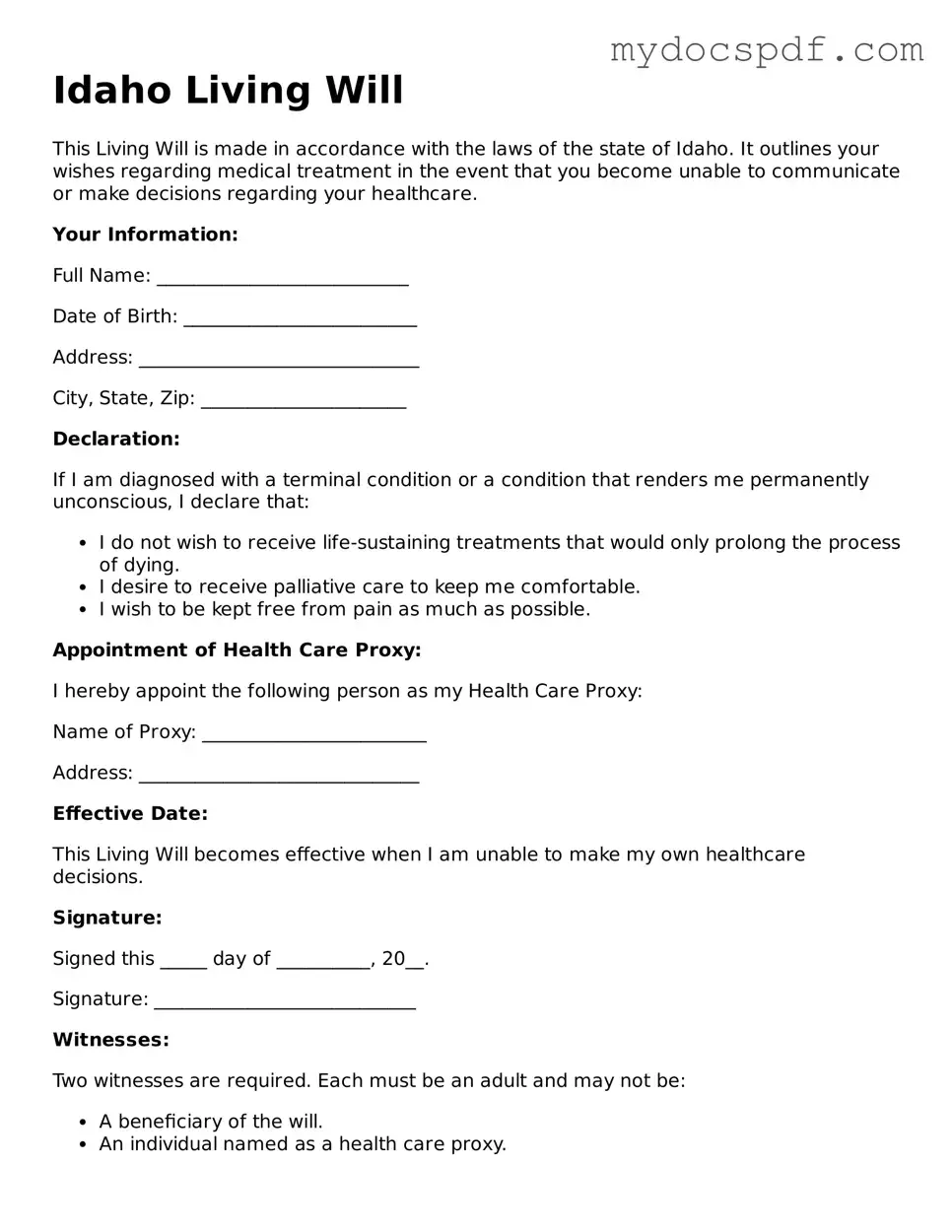Idaho Living Will
This Living Will is made in accordance with the laws of the state of Idaho. It outlines your wishes regarding medical treatment in the event that you become unable to communicate or make decisions regarding your healthcare.
Your Information:
Full Name: ___________________________
Date of Birth: _________________________
Address: ______________________________
City, State, Zip: ______________________
Declaration:
If I am diagnosed with a terminal condition or a condition that renders me permanently unconscious, I declare that:
- I do not wish to receive life-sustaining treatments that would only prolong the process of dying.
- I desire to receive palliative care to keep me comfortable.
- I wish to be kept free from pain as much as possible.
Appointment of Health Care Proxy:
I hereby appoint the following person as my Health Care Proxy:
Name of Proxy: ________________________
Address: ______________________________
Effective Date:
This Living Will becomes effective when I am unable to make my own healthcare decisions.
Signature:
Signed this _____ day of __________, 20__.
Signature: ____________________________
Witnesses:
Two witnesses are required. Each must be an adult and may not be:
- A beneficiary of the will.
- An individual named as a health care proxy.
First Witness:
Name: ______________________________
Address: ___________________________
Signature: __________________________
Second Witness:
Name: ______________________________
Address: ___________________________
Signature: __________________________
Please keep this document in a safe place and provide copies to your family and healthcare provider.
